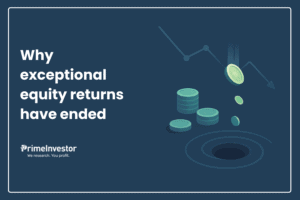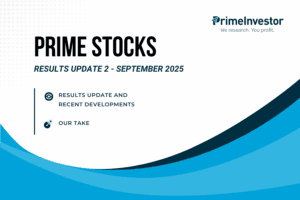Multi-asset allocation, by itself, is part of any portfolio building strategy. Both your portfolio’s return potential and its ability to contain downsides is determined by the asset allocation you choose. To this extent AMCS are trying to provide an all-in-one solution through a hybrid category of mutual funds called multi-asset allocation funds.
If this is the case, can you use multi-asset allocation funds in lieu of having say 3 or 4 funds? Let us find out.

This category is a relatively new one, coming in as part of SEBI mandatory categorization in 2018. These funds are a mix of those that were launched afresh and those that were shifted to this category from a different one. So, even if funds had a long track record, be aware that they were most likely entirely different in terms of strategy or portfolio or category pre-June 2018. We had done a review of multi-asset allocation funds in 2020, but funds did not have sufficient records. With a reasonable track record now built up in these funds, let’s now see how they fare now and whether they will fit a portfolio.
About multi-asset allocation funds
Multi-asset allocation funds in general seek to contain downsides in equity and also participate in other asset classes to the extent of both reducing equity volatility and to generate some returns when other asset classes rally.
These funds invest in a variety of asset classes – predominantly equity, debt and gold. Some also have REITs and commodity derivatives (yes commodities themselves!). Most of them have a mandate to invest up to 65% in equity with up to 25% in debt and 10-15% in gold. Funds try to marginally tweak these allocations based on their view on asset classes. However, this does not vary much. For example, on an average equity holding of this category has ranged between a narrow band of 58-62% in the last 2 years.
However, there are funds with larger exposure to equity than others. The data below shows the exposure of these funds to different asset classes, as of July 2022. We have included the two solution-oriented fund of funds with multi asset strategy as well (from Kotak and Quantum AMCs).
If you need to figure if they fit your portfolio you need to be cognizant of:
- The fund’s volatility and for what time frame it is appropriate
- The fund’s portfolio strategy and the risk it assumes
- The fund’s return capability compared with other categories and whether it fits your goal
So, let’s route our discussion based on the above factors.
Time frame
Whether a fund is suitable for a short-term or long-term portfolio should primarily be determined by the downside risk (risk of generating negative returns in market falls) in the fund over different time frames and how it fares compared with other categories. For this purpose, we took data rolling over 1-year periods for 3 years (we can’t go with longer data given their relatively short period of existence). That means the return period starts right after this category was created.
The data below will tell you that multi-asset allocation funds fare better than the aggressive hybrid category in terms of volatility (measured by standard deviation) and in terms of the worst one-year returns (given as minimum returns). This is not really surprising given that aggressive hybrid funds hold about 70-75% in equities. But balanced advantage and equity savings funds do a far better job of containing volatility and reducing drawdowns over 1-year periods. So, if your time frame is short and your aim is to reduce hits to your capital, multi assets will not be the best option. You have other categories to choose from.
One positive about the multi-asset allocation category is that the proportion of negative returns over the 1-year period, at about 10% on an average, is not bad. For 2-year rolling return periods, this proportion is at 5% and for 3-year return periods (very limited instances) it is 1.5%. That means the chance of negative returns substantially reduces after a year. But note this particular data point can be deceptive given the very limited time frame we are dealing with. The proportion of negative returns can be far higher if there is any prolonged or sharp correction in the market like 2008. We do not have such instances here as the 2020 correction was short lived.
To sum up:
- Multi-asset allocation is not suitable if you have short time frames. A minimum of 3-year time frame can help reduce risk of capital erosion.
- Multi-asset allocation is far more volatile than other hybrid categories such as balanced advantage, equity savings or hybrid conservative.
Risk
The above data on volatility and negative returns gives you an idea about the nature of risk involved in multi-asset allocation funds. But a fund’s strategy in each asset class can also decide whether the fund is suitable for you. There are two things here:
- The allocation to each asset class
- The strategy within each asset class
If you take funds such as SBI Multi Asset Allocation, its portfolio over several months/years will tell you that it is far less aggressive than peers in terms of exposure to equities. So, if you are looking for low volatility, funds like SBI will fit the bill better. On the other hand, in its debt portfolio, it is benchmarked against the 10-year gilt and holds close to a fourth in debt. This brings in some volatility from debt.
If you take an aggressive fund like Quant, which has high exposure to equity on most occasions or a fund with commodity derivatives exposure like Tata, the average returns are much higher, but so are volatility and negative returns (Tata’s worst returns look better than the rest because of commodity rally over the period considered).
Besides, while some of the funds use the Nifty 50 as their benchmark, others use Nifty 200 or also add the S&P BSE 500. In debt, some go with Short Term Bond index and others with Gilt. A few others like Tata and Quant have Commodity index as benchmark as they have the option to invest in commodity futures. This information too, will let you know whether the fund’s strategy is aggressive or less so, within each asset class.
So, if you were not aware of the composition of the portfolio – whether it has high equity or gold or the nature of debt, you could end up with a fund that does not fit your portfolio. You may also make wrong conclusions about the performance of the fund (if a fund with commodity futures performs well in a commodity rally, it may not necessarily do so later).
The table below, which shows how each fund is benchmarking itself, will give you some idea of how a fund may allocate its portfolio.
Return
As with every category, it is the performance that will ultimately decide whether the fund will fit your own return expectation for a given time frame. On this count, Multi-asset allocation funds don’t fare poorly - but neither are they doing great 😊
Let us summarize the observation in points to make it easier for you:
- Resembles aggressive hybrid in shorter period returns: Over rolling 1-year periods, multi-asset allocation funds fare close to hybrid aggressive funds despite lower volatility. However, over periods of 3 years, aggressive hybrid perform far better.
- Closer to balanced advantage category in long-term returns: Balanced advantage funds may be closer to multi-asset allocation funds in terms of long-term performance, even though the above 1-year rolling data does not suggest this due to prolonged rally in equity. The category’s rolling 3-year return at an average 11% is close to the balanced advantage category. In terms of risk, balanced advantage may be a notch better. Please note that we had to do this check with fewer funds in the multi asset category as most don’t have sufficient record.
- Trails blended benchmark: We took a blended benchmark of 65% equity, 10% gold and 25% Nifty Composite Bond index and observed that the index actually delivered marginally better. Besides, the multi asset category beat this blended index only 43% of the time on a rolling 1-year return basis. Of course, our equity allocation was a steady 65% while multi asset funds remain rangebound and could have lower equity – but even so, it helps indicate that the asset allocation tweaks based on markets may not really help improve returns much.
- Trails active portfolio: We built a portfolio from our recommendation: Parag Parikh Flexicap (65%), HDFC Short Term Debt (25%) and SBI Gold (10%). You will see that the active blended portfolio outperformed convincingly.
- Ex-Quant return dips: We also classified the returns removing the Quant fund, as this fund has abnormally high equity and actively churns its portfolio for returns. You will see that the multi-asset ex-Quant returns are lower by a good 2 percentage points thus dragging them below aggressive hybrid and the blended benchmark, further.
Should you own multi-asset allocation funds?
If you ask us whether this is a substitute for holding 3 funds from different asset classes, you will know by now that it is not 😊 There is a high chance that a static asset allocated portfolio, even if you mix plain vanilla index funds, can likely deliver better. At best, if you have a 2–3-year time frame, then you have the option of choosing between balanced advantage and multi-asset funds provided these are more conservatively managed. To summarize:
- If you are investing for the long term, it is best to blend funds from different asset classes. This way, the best in each category is available to you and you will be able to pick different strategies in both equity and debt (or gold). You will be likely to hold a slightly higher exposure to equity as well, if your risk appetite is moderate to high. With multi-asset allocation, you are capping your equity and only protecting downside.
- Not all multi-asset allocation funds will be classified as equity for tax purposes since some of them have lower than 65% equity exposure. Hence, on the tax front there is a good chance you may lose out on returns.
- You need to understand the portfolio composition of every multi-asset allocation fund before you choose one. Our asset allocation table at the start of this analysis will give you an idea of the nature of exposure each fund takes. But do know that this may change over time. To know asset allocations, use our MF Screener - choose the category Hybrid - Others and the sub-category ‘Multi-Asset Allocation. Use the feature ‘ADD FILTERS > PORTFOLIO’ and select exposure to equity, debt and others.
- These funds have higher expense ratios relative to individual asset categories. The regular option, especially, has an average 2% expense (0.7% under direct). Some funds such as UTI and ICICI have 1.1-1.2% even under the direct plan. This is on the higher side compared with equity funds and debt funds invested separately.







6 thoughts on “When to use multi-asset allocation funds”
If possible, can we do a separate article on SBI Multi Asset Allocation fund?
I was analyzing the rolling returns of this fund in comparison to other multi-asset funds and found the volatility of this fund to be drastically lesser than the other popular ones like ICICI Pru Multi Asset.
The fund seems to be content with a long term return of 8-9% but the fluctuation/risk seems to be less.
Yes it is indeed low volatile as you observed; as it is quite conservative in equity holding. But this does impact returns. In our view, for the given risk, you can simply consider separate equity and debt funds than use this approach. We have covered about this here: https://www.primeinvestor.in/when-to-use-multi-asset-allocation-funds/
Vidya
Once again excellent analysis and article from Vidya;
Would have appreciated if like one year comparative tables even three year comparative table would have been included (as you have referred to 3 year data at some places in the article)
The Best part of you analysis, as always, continues to be giving both sides of the coin picture or 360% view as they say – mind you it is not negative – and hence would really appreciate that you Keep up the same..
Thanks
nice article
This article really helped crystallise some thoughts I had on the negatives of different asset classes within one fund.
amazing insights and detailed research.
Comments are closed.